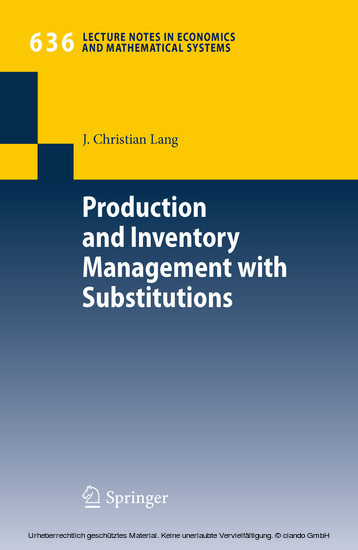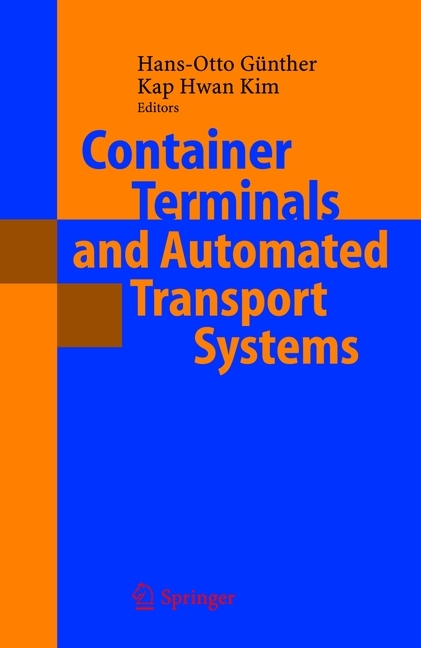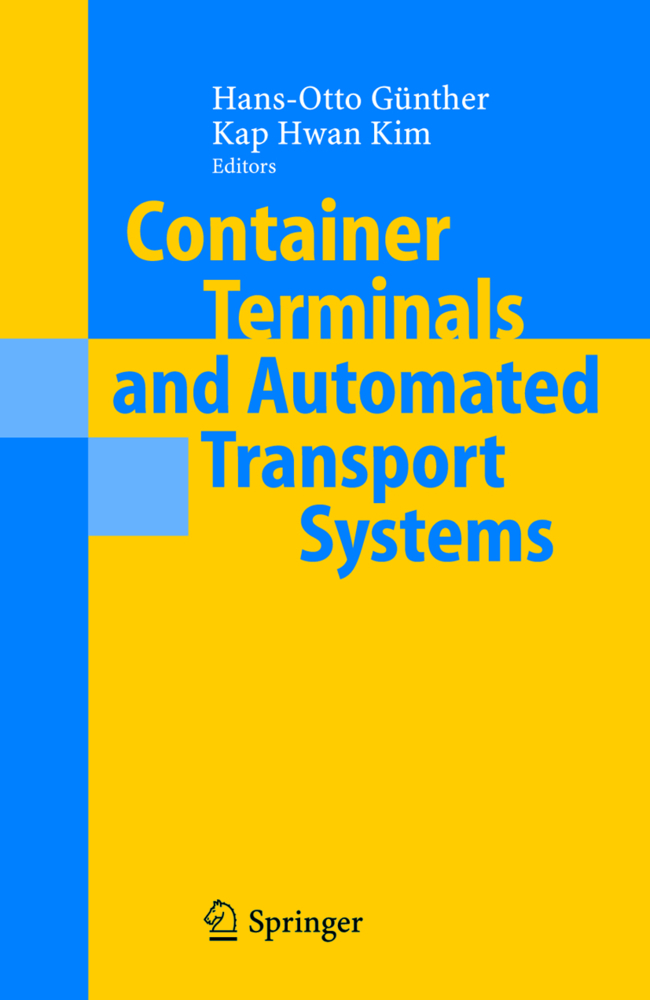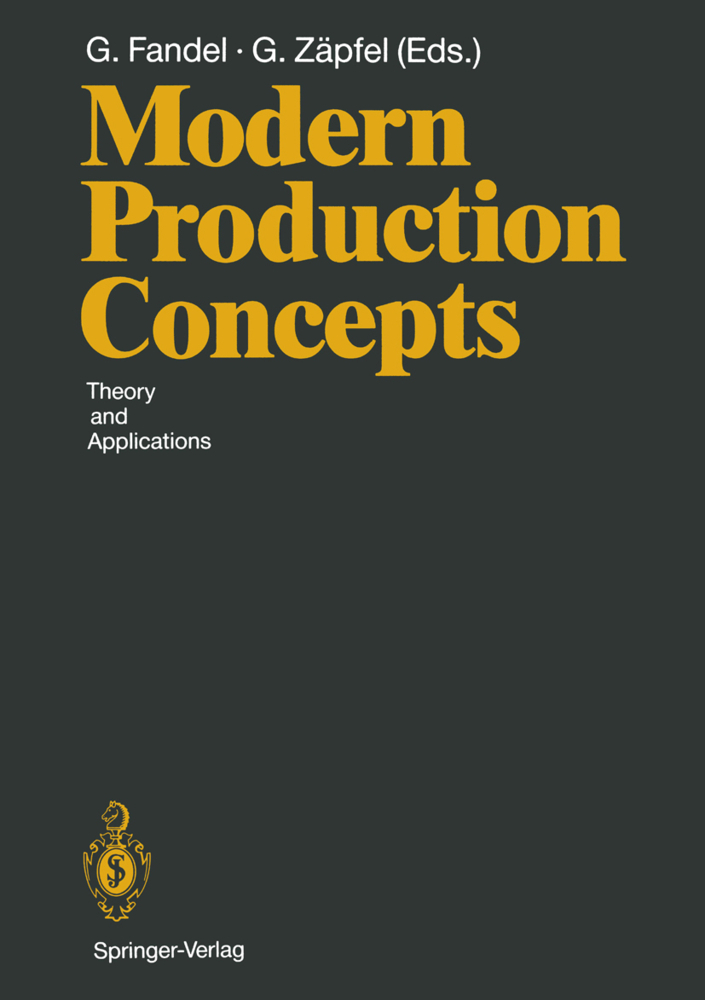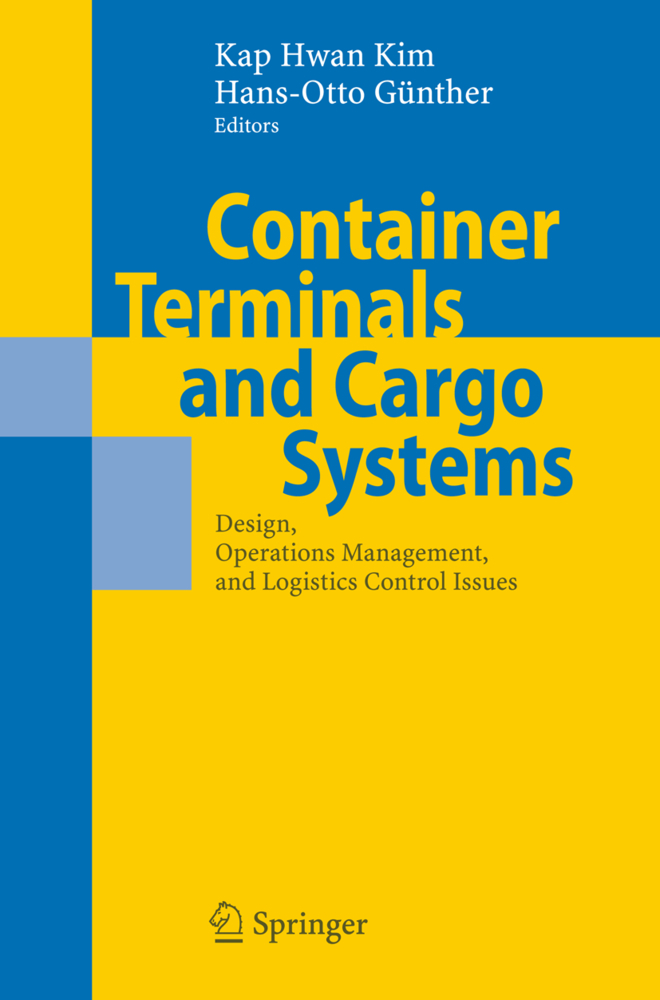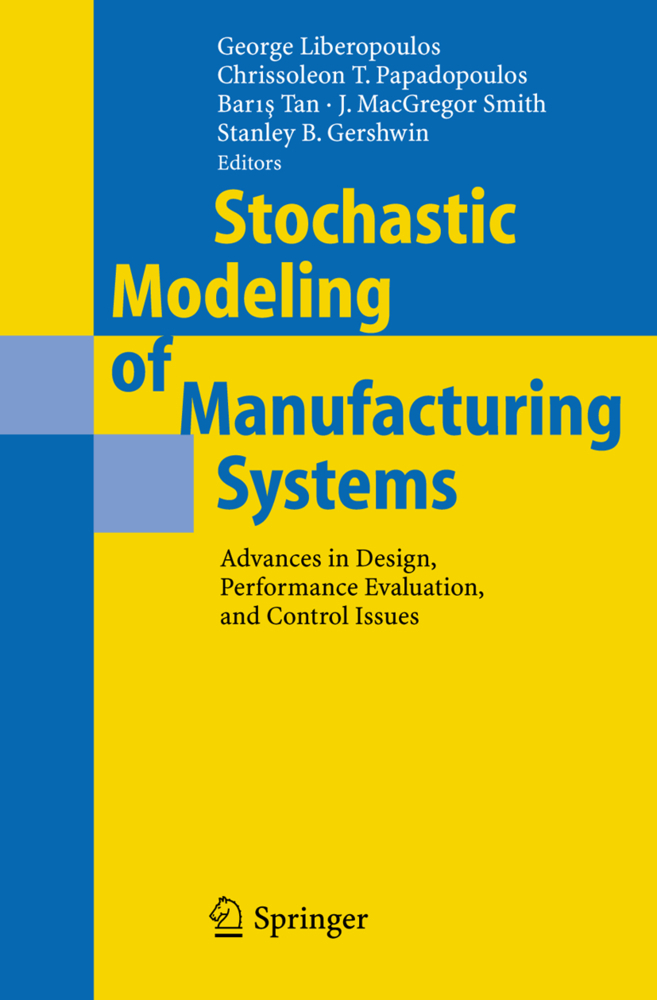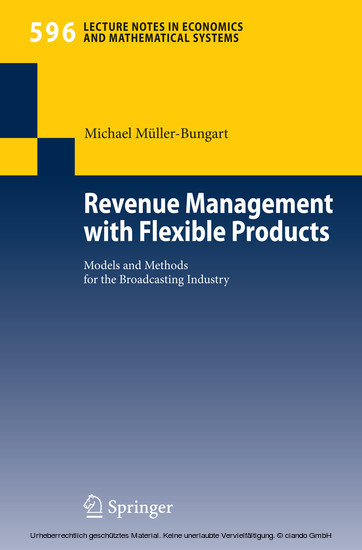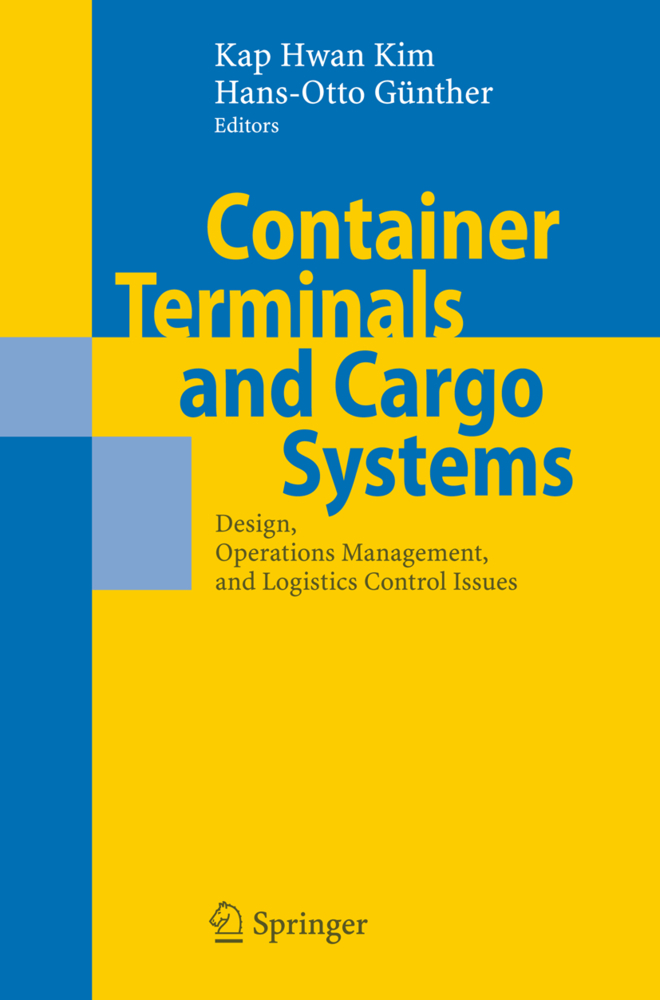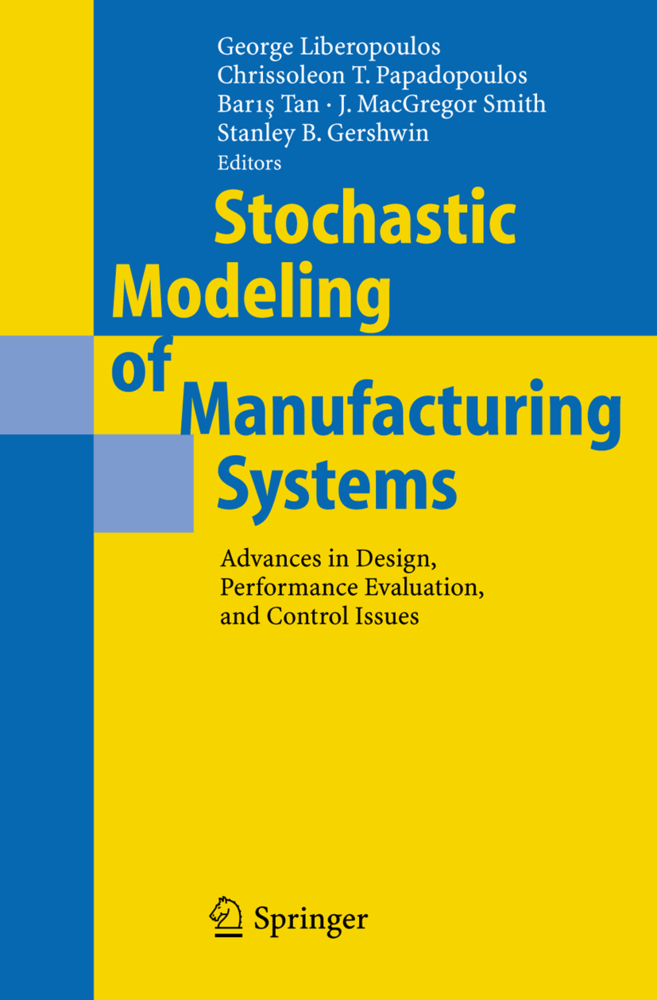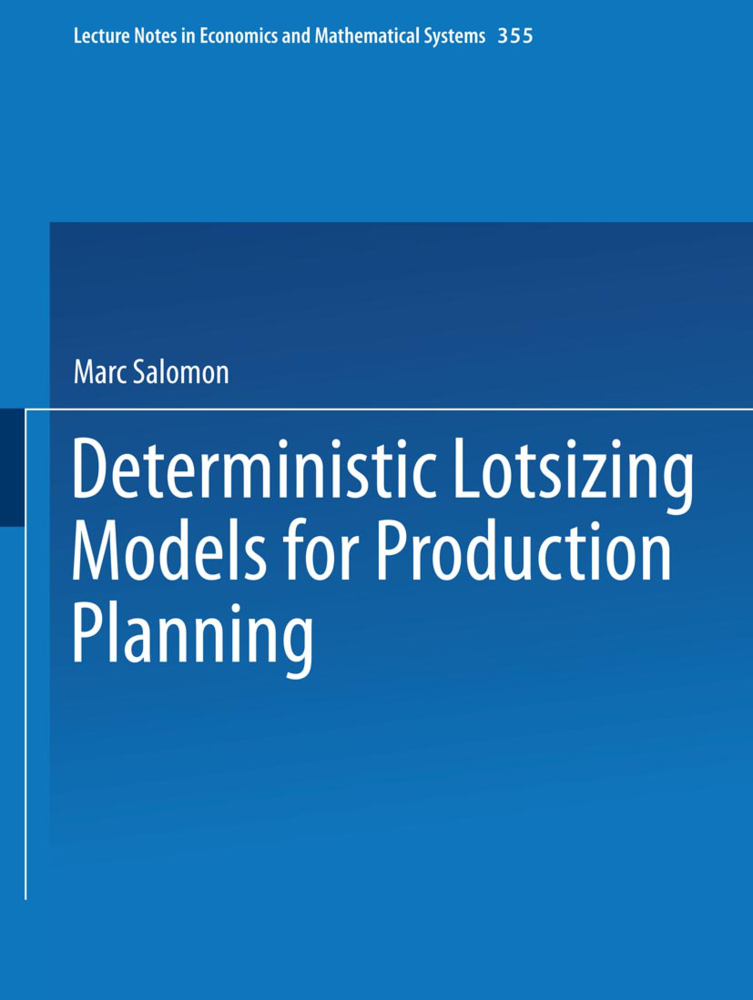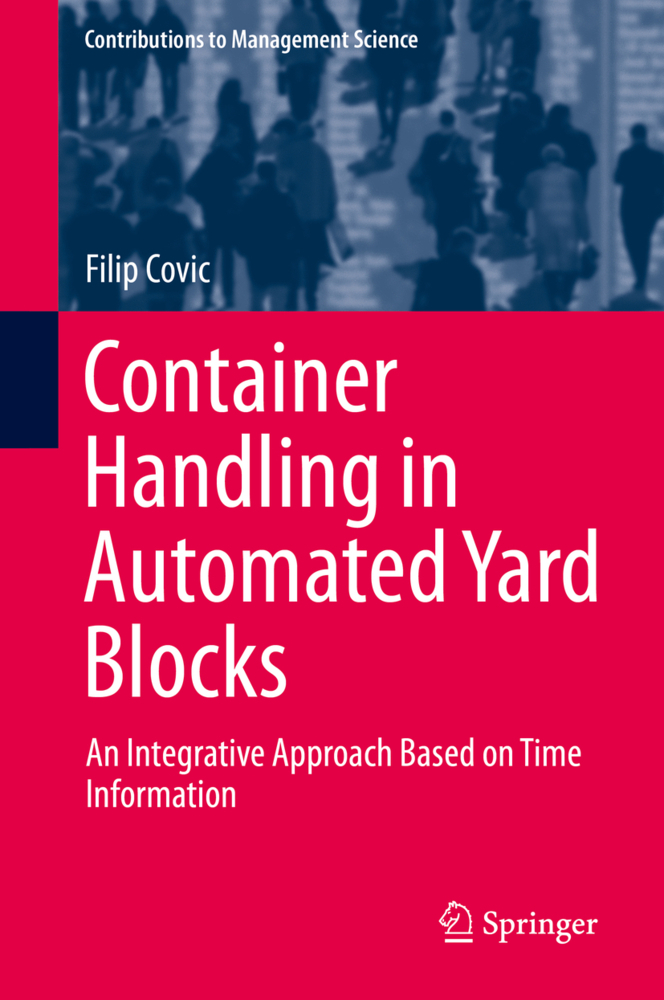Production and Inventory Management with Substitutions
This book addresses production and inventory management problems where products can be replaced by specified substitutes. Depending on the considered application, substitutions can potentially improve the service level, reduce required safety stocks and total setup costs and times, utilize cost variations of input products, and reduce the amount of wastage. The main focus is the development of graphical modeling approaches for substitution options and of production planning models based on these approaches using mathematical programming. In addition to single-level dynamic lot-sizing models with substitutions, models for multi-level production systems with flexible bills-of-materials and recipes are devised. Also, a simulation-based optimization approach for a multi-location inventory system with substitutions is developed.
1;Foreword;5 2;Preface;7 3;Contents;9 4;List of Figures;13 5;List of Tables;16 6;Acronyms;18 7;1 Introduction;20 7.1;1.1 Definitions;22 7.2;1.2 Motivation;23 7.3;1.3 Goals;24 7.4;1.4 Outline;25 8;2 Production and Operations Management:Models and Algorithms;28 8.1;2.1 Dynamic Lot-Sizing;29 8.1.1;2.1.1 Classification of Models;30 8.1.1.1;2.1.1.1 Context of Model;30 8.1.1.2;2.1.1.2 Production System Characteristics;36 8.1.1.3;2.1.1.3 Modeling Technique;45 8.1.1.4;2.1.1.4 Decision Variables;49 8.1.1.5;2.1.1.5 Objective(s);50 8.1.2;2.1.2 The Wagner-Whitin Problem;52 8.1.3;2.1.3 The Capacitated Lot-Sizing Problem;53 8.1.4;2.1.4 The Capacitated Lot-Sizing Problemwith Sequence-Dependent Setups;55 8.1.5;2.1.5 The General Lot-Sizing and Scheduling Problem;58 8.1.6;2.1.6 The Multi-Level Capacitated Lot-Sizing Problem;61 8.1.7;2.1.7 The General Lot-Sizing and Scheduling Problemfor Multiple Production Stages;63 8.1.8;2.1.8 Comparison of Models;70 8.2;2.2 Solution Techniques for Dynamic Lot-Sizing;71 8.2.1;2.2.1 Overview;71 8.2.2;2.2.2 Valid Inequalities;73 8.2.3;2.2.3 Reformulations;74 8.2.4;2.2.4 Combinations of Heuristics and Exact Algorithms;76 8.2.5;2.2.5 Selected Approaches for Lot-Sizingwith Sequence-Dependent Setups;80 8.3;2.3 Transshipment Problems;81 8.3.1;2.3.1 Basics;81 8.3.2;2.3.2 Classification of Models;82 8.4;2.4 Solution Techniques for Transshipment Problems;85 8.4.1;2.4.1 Existing Approaches for Transshipment Problems;85 8.4.2;2.4.2 Simulation-Based Optimization;87 8.4.2.1;2.4.2.1 SBO Applications;88 8.4.2.2;2.4.2.2 Elements of an SBO Model;89 8.4.2.3;2.4.2.3 Classification of SBO Models;91 8.4.2.4;2.4.2.4 Specifics of SBO;92 8.4.2.5;2.4.2.5 Common Random Numbers;94 8.4.2.6;2.4.2.6 SBO Algorithms: Taxonomy and Selection Criteria;95 8.4.2.7;2.4.2.7 Direct Search: Pattern Search;96 8.4.3;2.4.3 Robust Optimization;97 9;3 Graphical Modeling of Substitutions and Flexible Bills-of-Materials;99 9.1;3.1 Applications;99 9.2;3.2 Modeling Approaches;102 9.2.1;3.2.1 Blending Models;103 9.2.2;3.2.2 Substitution Graphs;103 9.2.2.1;3.2.2.1 Substitution Structures;104 9.2.2.2;3.2.2.2 Demand Class-Specific Substitution Options;104 9.2.2.3;3.2.2.3 Modeling Transitive Substitution Options;105 9.2.2.4;3.2.2.4 Substitution Ratio;106 9.2.2.5;3.2.2.5 Substitution Triangle Inequality;107 9.2.3;3.2.3 Substitution Hypergraphs;107 9.2.3.1;3.2.3.1 Modeling Approach;107 9.2.3.2;3.2.3.2 Classification Criteria;110 9.2.4;3.2.4 Task-Oriented Modeling;112 9.2.5;3.2.5 Comparison of Modeling Approaches;115 9.3;3.3 Model Classification Criteria;116 9.3.1;3.3.1 Demand;116 9.3.1.1;3.3.1.1 Information and Activeness of Customers Regarding Substitutions;116 9.3.1.2;3.3.1.2 Substitution Acceptance;118 9.3.1.3;3.3.1.3 Linkage of Substitutions to Customer Orders;120 9.3.2;3.3.2 Model Context;120 9.3.2.1;3.3.2.1 Planning Level of Substitution;120 9.3.2.2;3.3.2.2 Substitute Sources;120 9.3.3;3.3.3 Substitution Characteristics;121 9.3.3.1;3.3.3.1 Substitute Preference Order;121 9.3.3.2;3.3.3.2 Partial vs. Exclusive Substitution;121 9.3.4;3.3.4 Conversions;121 9.3.4.1;3.3.4.1 Interpretations of Conversion Costs;121 9.3.4.2;3.3.4.2 Setup Times;122 9.3.4.3;3.3.4.3 Production and Conversion Capacities;122 9.3.4.4;3.3.4.4 Product Type Quantities;123 9.3.4.5;3.3.4.5 Time of Conversion;123 9.3.5;3.3.5 Production;124 9.3.5.1;3.3.5.1 Yield;124 9.4;3.4 Implementing Product Substitution;124 10;4 Literature Review;128 10.1;4.1 Assortment Problems;128 10.2;4.2 Lot-Sizing with Substitutions;129 10.2.1;4.2.1 The Requirements Planning Problem with Substitutions;130 10.2.2;4.2.2 Substitution with/without Conversion Problems;133 10.2.3;4.2.3 The Multi-level Lot-Sizing Problem with Flexible Production Sequences;134 10.2.3.1;4.2.3.1 Assumptions;135 10.2.3.2;4.2.3.2 Formulation;135 10.2.3.3;4.2.3.3 Transformation of RPS and SWCP into Special Case of MLFP;137 10.3;4.3 Related Aspects;138 11;5 Efficient Reformulations for Uncapacitated and Capacitated Lot-Sizing with Substitutions and Initi
Lang, J. Chr.
| ISBN | 9783642042478 |
|---|---|
| Artikelnummer | 9783642042478 |
| Medientyp | E-Book - PDF |
| Auflage | 2. Aufl. |
| Copyrightjahr | 2009 |
| Verlag | Springer-Verlag |
| Umfang | 260 Seiten |
| Sprache | Englisch |
| Kopierschutz | Digitales Wasserzeichen |

